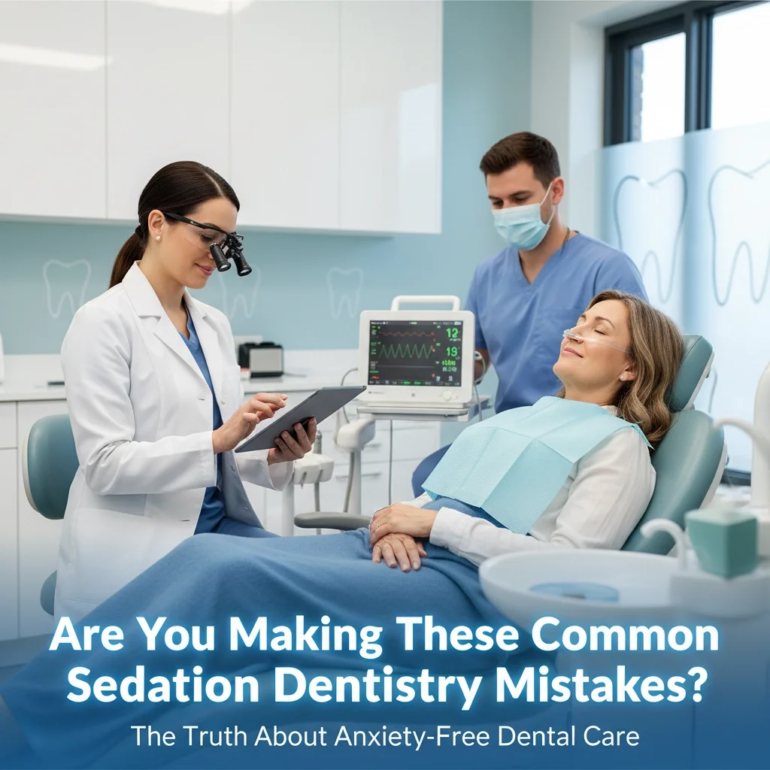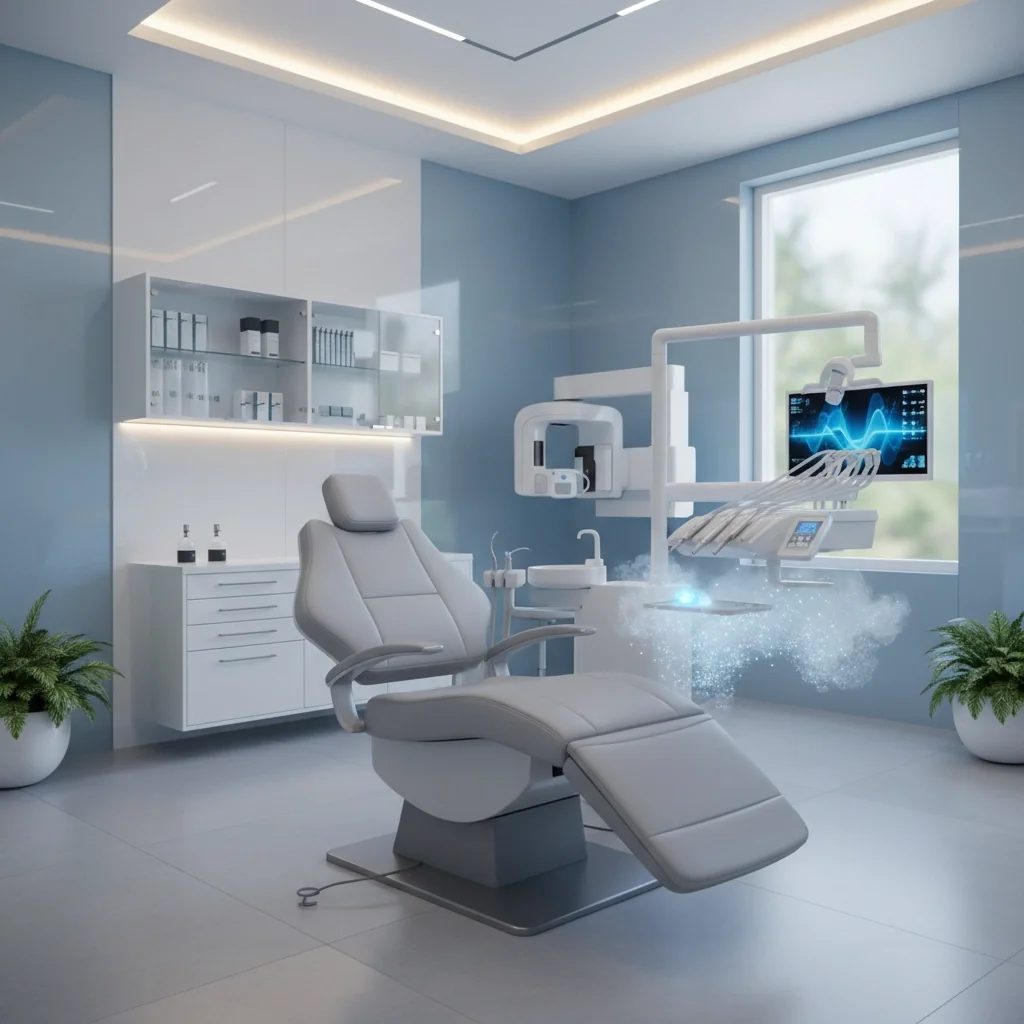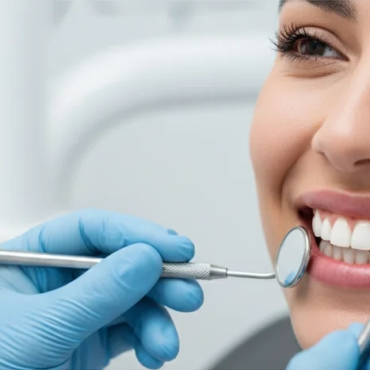Are You Making These Common Sedation Dentistry Mistakes?
If dental anxiety has been keeping you away from the dentist’s chair, you’re not alone. Studies show that nearly 25% of adults worldwide experience dental anxiety strong enough to prevent them from seeking routine care. Sedation dentistry offers a practical solution, transforming what could be a stressful experience into a comfortable, manageable one. However, many patients unknowingly sabotage their sedation experience through critical mistakes, while others avoid this beneficial option entirely due to persistent myths and misconceptions.
Understanding the reality of sedation dentistry can dramatically improve your dental care experience. Unfortunately, misinformation and poor post-procedure decisions often lead to complications that could easily be prevented. Let’s explore the most common mistakes patients make and separate fact from fiction when it comes to anxiety-free dental care.
Critical Post-Procedure Mistakes That Can Compromise Your Recovery
Returning to Normal Activities Too Quickly
One of the most dangerous mistakes patients make involves resuming their regular routine immediately after sedation. This decision can have serious consequences for your safety and recovery process. Sedation medications can leave lingering effects such as drowsiness, slower reflexes, and mild confusion for several hours after your procedure.
Attempting to drive, return to work, or handle complex tasks puts you at significant risk of accidents or injury. Your reaction times remain compromised even when you feel alert, and your judgment may be impaired without you realizing it. Consequently, you should plan a full day of rest after your procedure and arrange for someone to drive you home and assist with basic needs.

Prioritizing sleep, hydration, and light activities allows your body to fully process the sedative medications. As a result, you’ll experience a smoother recovery and avoid potentially dangerous situations that could arise from impaired coordination or decision-making abilities. You can maintain an anxiety-free dental care state of mind with this method as one solution.
Disregarding Dietary Guidelines and Restrictions
Your lips, tongue, and throat may remain numb for several hours after sedation, significantly increasing the risk of accidentally biting your cheek, tongue, or lips. Many patients ignore these restrictions and eat whatever they want, compromising both their safety and healing process.
The numbness from local anesthetics can mask pain signals that normally prevent you from injuring yourself while eating. Consequently, you might bite down too hard or chew in areas where you’ve had dental work done. You should strictly adhere to your dentist’s dietary recommendations, starting with soft foods like:
- Yogurt and smoothies
- Mashed potatoes
- Soup (lukewarm, not hot)
- Scrambled eggs
- Ice cream or pudding

Avoid using straws during your recovery period, as the suction pressure can disrupt healing and potentially dislodge blood clots. Similarly, skip alcohol and caffeinated drinks until your dentist gives you clearance, as these substances can interfere with your recovery and interact negatively with residual sedation medications.
Neglecting Proper Oral Hygiene
Some patients mistakenly believe they should avoid cleaning their mouth entirely after sedation dentistry. This misconception can lead to infection and delayed healing. While you should be gentle, maintaining proper oral hygiene remains crucial for your recovery process.
Your dentist will provide specific instructions for cleaning your mouth based on the procedure you’ve undergone. Following these guidelines helps prevent bacterial buildup and promotes faster healing. Generally, you should use a soft-bristled toothbrush and avoid vigorous rinsing for the first 24 hours.
Debunking Common Sedation Dentistry Myths
“Sedation Is Only for Major Surgeries”
This widespread misconception prevents many patients from accessing comfort options that could significantly improve their dental experience. Sedation is available in varying levels for routine treatments such as cleanings, fillings, and periodontal treatment. The versatility of sedation dentistry makes it accessible for various dental care requirements beyond invasive procedures.
Many patients benefit from sedation during routine care, particularly those with:
- Strong gag reflexes that interfere with treatment
- Difficulty sitting still for extended periods
- Time constraints requiring multiple procedures in one visit
- Special needs that make traditional dental care challenging
- Previous traumatic dental experiences
Consequently, you don’t need to endure discomfort during routine dental care when sedation options are readily available to help you feel more comfortable and relaxed.
“You’re Completely Unconscious During Sedation”
This misunderstanding stems from confusion between different types of sedation. General anesthesia does render patients completely unconscious, but most forms of sedation dentistry work differently. With options like nitrous oxide (laughing gas) or oral sedation, you remain awake and responsive while feeling deeply relaxed and at ease.
This conscious state actually benefits both you and your dentist. You can still respond to questions, follow simple directions, and communicate if you experience any discomfort. Your dentist can adjust treatment as needed, resulting in a more effective and efficient experience. Only general anesthesia renders you unconscious, and it’s typically reserved for major oral surgeries like wisdom tooth extraction or extensive reconstructive work.
“Sedation Dentistry Is Dangerous”
Modern sedation dentistry is incredibly safe when administered by qualified professionals. Your dentist and their team carefully monitor your vital signs throughout the procedure, including your heart rate, blood pressure, and oxygen levels. They adjust medication dosages as needed to ensure your comfort and safety throughout the entire process.
The medications used in sedation dentistry have been extensively tested and refined over decades of use. Serious complications are extremely rare, particularly when patients follow pre- and post-procedure instructions carefully. Your dentist will review your medical history and current medications to ensure sedation is safe and appropriate for your specific situation.
“Sedation Medications Are Addictive”
When administered properly by dental professionals, sedation medications used in dentistry have minimal addiction potential. The drugs commonly used include nitrous oxide and benzodiazepines, which are strictly controlled and prescribed only for specific dental procedures. Dentists follow rigorous safety protocols and regulatory guidelines when administering these medications.
Nitrous oxide, in particular, is not addictive and leaves your system quickly once the gas flow stops. Oral sedatives are prescribed in specific, limited quantities for single procedures, eliminating the opportunity for dependency to develop. Your dentist carefully considers your medical history and current medications to ensure safe administration.
“Children Cannot Safely Receive Sedation”
This myth prevents many anxious children from receiving the dental care they need. Children can safely receive dental sedation, and they’re often the ones who benefit most from it. Nitrous oxide is frequently used for children who experience dental anxiety or need procedures that might cause discomfort.
Pediatric sedation requires special training and considerations, but it’s a well-established practice with excellent safety records. Factors such as your child’s overall health, medical history, and specific dental needs are more important than age in determining appropriate sedation options. Many children who previously avoided dental care due to fear can receive necessary treatment comfortably with appropriate sedation.
Understanding Your Sedation Options
Sedation dentistry encompasses several approaches, each designed for different levels of anxiety and procedure complexity. Understanding these options helps you make informed decisions about your care.
Nitrous Oxide (Laughing Gas) represents the mildest form of sedation. You breathe the gas through a mask, feeling relaxed while remaining fully conscious and able to respond normally. The effects wear off quickly once the mask is removed, allowing you to resume normal activities sooner than other sedation methods.
Oral Sedation involves taking prescribed medication before your appointment. This approach provides deeper relaxation than nitrous oxide while still allowing you to remain conscious and responsive. You’ll need someone to drive you to and from your appointment, as the effects can last several hours.
IV Sedation delivers medication directly into your bloodstream, allowing for precise control over sedation levels. Your dentist can adjust the medication throughout your procedure to maintain optimal comfort. This method provides deeper sedation while still keeping you conscious and able to respond to instructions.
General Anesthesia renders you completely unconscious and is reserved for extensive surgical procedures. You’ll have no memory of the procedure and will need careful monitoring during recovery.
Moving Forward with Confidence
Dental anxiety shouldn’t prevent you from receiving the oral healthcare you deserve. Sedation dentistry offers legitimate solutions that allow you to receive necessary treatment in a comfortable, stress-reduced environment. By avoiding common post-procedure mistakes and understanding the facts about sedation safety and effectiveness, you can make informed decisions about your dental care.
If you’ve been avoiding dental treatment due to anxiety, consider discussing sedation options with your dental team. They can evaluate your specific needs, medical history, and anxiety levels to recommend the most appropriate approach. One solution to receiving Anxiety-Free Dental Care.
Remember that maintaining good oral health contributes significantly to your overall well-being, and sedation dentistry makes that goal achievable for everyone, regardless of their anxiety levels.
Your comfort and safety remain the top priorities throughout any sedation dentistry experience. By following proper pre- and post-procedure guidelines and working with qualified professionals, you can achieve the anxiety-free dental care you’ve been seeking.




